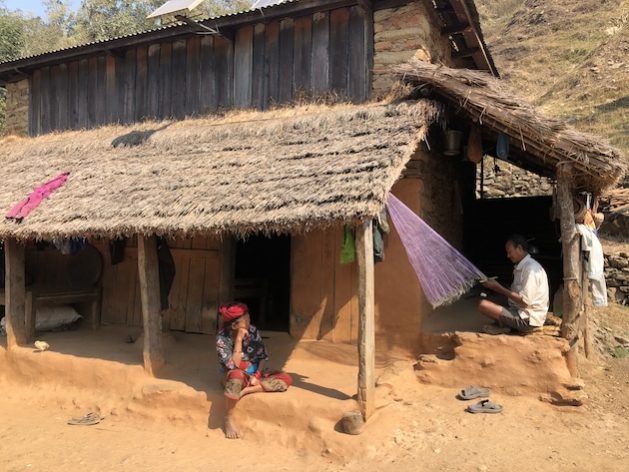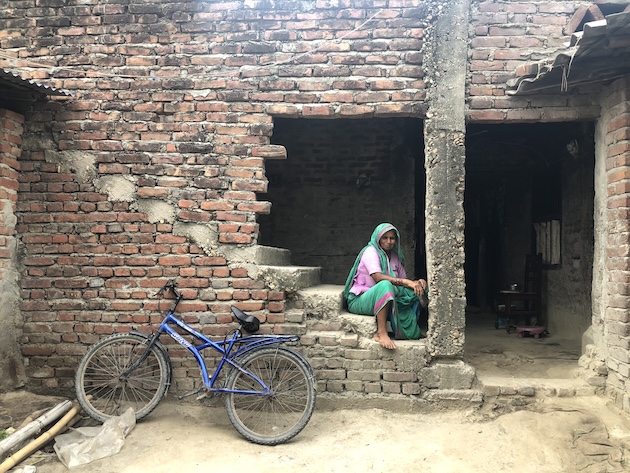Nepal Farmers Face Another Year of Agricultural Drought, Threatening Food Security

KATHMANDU, Feb 13 (IPS) - Najboon Khatun looks up at the sky every day, searching for the possibility of rain. Clouds come and go without a drop of water. “Winter crops like wheat and vegetables need water, but like last year, there has been no rainfall yet,” says 65-year-old Khatun, expressing her anguish.
In her village in Dhanusha, one of the agricultural hubs in the southern plains of Nepal, farmers mostly depend on rain as a source of irrigation. However, they are facing yet another year of drought, affecting winter crops, including wheat, mustard, lentils, and vegetables.
They are currently facing another year of a protracted winter drought, particularly in the Terai region, where a lengthy drought during the monsoon season severely affected the production of the main food crop, rice. Khatun was waiting for rain in the third week of July to plant a paddy. “We are suffering from drought,” she said at that time while pointing to her dry agricultural field. Farmers like her are facing the consequences of prolonged drought in both the monsoon and winter.
The winter drought is harsh not only in Terai but also for farmers in the mid-hills and mountainous areas. Kul Bahadur Pulami Magar (68) from Jwalamukhi-1, Dhading, is not able to grow wheat because of the drought.
"It's the second year in a row that we are not able to grow wheat and other winter crops.”
Farmers in the mid-hills like Dhading mainly depend on rainfall for irrigation, but in recent years, they have been experiencing a change in the rainfall pattern in the monsoon and drought in the winter.
According to the Department of Meteorology and Hydrology (DHM), in 11 of the last 17 winters (December to February), there has been less than the minimum rainfall, and seven winters experienced drought affecting agricultural activities. Even though seasonal forecasts said otherwise, this year's winter rainfall didn’t happen when farmers needed it the most. According to the DHM data from December onwards, there is nearly no rainfall; only 7.5 millimeters of rainfall were received (until February 11), while the average for the winter season is 60.1 millimeters.
"A prolonged winter drought will definitely have an impact on crops, ultimately altering food security,” said Bibhuti Pokhrel, head of the Climate Change Department at the DHM. “The last few winters are becoming drier, and we can see climate change factors too.”
Agricultural Drought
Frustration is growing among farmers like Khatun and Pulami Magar due to changes in rainfall patterns and their impact on crop yield, a concern shared by experts. Dr. Hemu Kafle says, “Farmers are trapped in situations where they don’t get enough rain when they need it.”
In recent years, there has been a trend of prolonged winters without precipitation, impacting production.

Kafle, whose research focuses on drought and desertification, notes that farmers are experiencing “Agricultural Drought” more frequently, especially in winter. She explains, “There is historically low snowfall in the high mountains, and rainfall is not near happening in the mid-hills and Terai, directly affecting the socio-economic aspect of our society.”
Usually, March to May is the dry season in Nepal, making winter precipitation important to maintain moisture. “Because there is no rain for a long time in winter, it is going to make our soil drier, and the vulnerability of farmers will increase.”
According to the International Center for Integrated Mountain Development (ICIMOD), mountain peaks in the Hindu Kush Himalaya (HKH) region, which includes 8 countries, including Nepal, are experiencing a very unusual winter with little or no snowfall throughout the region. In a recent statement, ICIMOD mentions, “Farmers are understandably concerned, as low snowfall has a direct and severe impact on agriculture. This is particularly acute for the HKH region, which is heavily dependent on agriculture.”
Researchers like Kafle fear it could be an indication of a “famine” down the line, stating, “We are observing a dry spell for a long time during farming, which is causing agricultural drought and may alter our food cycle.”
Low-Water-Intensive Crops and Farming Methods To Adapt
Data from the Ministry of Agriculture and Livestock also suggests that the productivity of wheat is lower in drought years.
Dr. Tika Bahadur Karki, Senior Scientist at the Nepal Agriculture Research Council (NARC), says it is evident that the winter rainfall pattern is not in favor of farmers.
“It is becoming routine that farmers are more likely to not get enough precipitation when their crops need it,” crop scientist Dr. Karki said.
“Winter rainfall is pushed towards the end of the season, all at once. But farmers need at least three rainfalls in winter.”
At NARC, a team of scientists is trying to determine crop planting times that will coincide with changing rain patterns and develop low-water-intensive crop varieties.
“In our experimental farming, where we don't dig soil that much, yield is high because we are able to keep soil moisture,” Karki explained. “If this system is extended to the farmers, production may not be affected much even in drought.”
But the problem is not having a dedicated strategy to channel weather and scientific knowledge to the farmers. “We are trying to analyze recent years’ weather patterns and what it means for agriculture,” Sabnam Shiwakoti Aryal, Joint Secretary and Spokesperson at the Ministry, said.
“We also recognize that scientific knowledge needs to be accessible to farmers.”
IPS UN Bureau Report
Follow @IPSNewsUNBureau
Follow IPS News UN Bureau on Instagram
© Inter Press Service (2024) — All Rights Reserved. Original source: Inter Press Service
 Global Issues
Global Issues